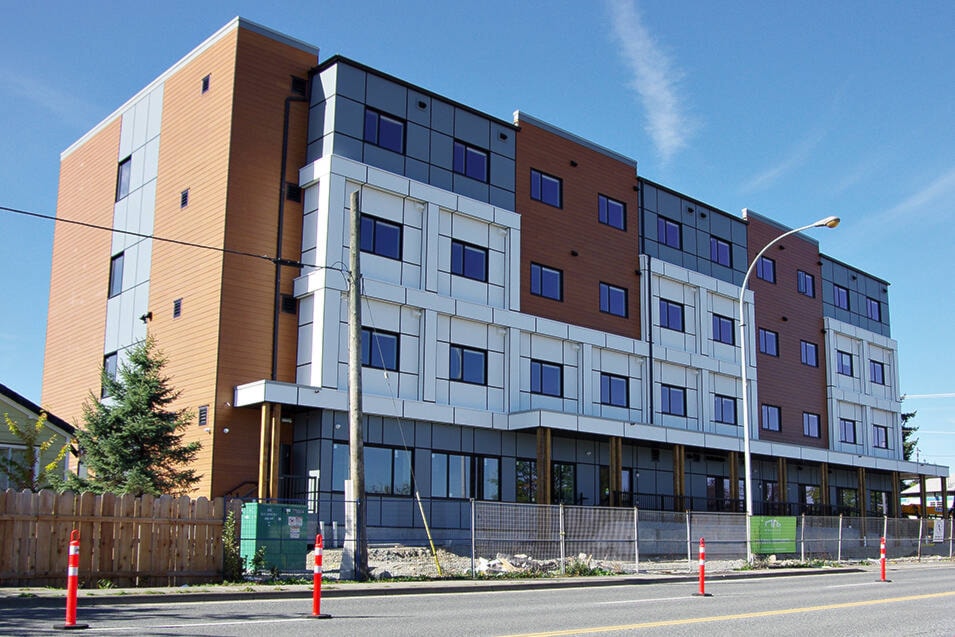The City of Nanaimo will ask that the next round of social housing include smaller supportive complexes, and possibly dry housing or transitional housing.
City council, at a meeting Monday, Nov. 1, voted 8-1 in favour of Coun. Erin Hemmens’s motion to create negotiation points for the next memorandum of understanding with B.C. Housing: to address housing needs in the city’s health and housing action plan, to explore opportunities to cap the number of units in supporting housing complexes at 35, to create drug- and alcohol-free facilities, and to develop transitional housing.
Hemmens said the points aren’t meant as firm demands, but rather as a representation of the types of “conversations” that are taking place around social housing in Nanaimo. She said her motion pairs well with council’s previous decision to ask staff to identify potential supportive housing sites in areas outside the downtown or south end.
“Imagine if we went to B.C. Housing and we said, ‘OK, we have two sites, here are our parameters,’” Hemmens said. “I think that’s really easy for B.C. Housing to then negotiate with staff and have that conversation.”
Coun. Ben Geselbracht agreed, and suggested that if the city pursues smaller complexes, every neighbourhood has a “responsibility” to support social housing.
“And if we can make sure there’s a model that’s safe, that can provide housing and can fit well into communities, the easier it is to get that investment and build,” he said.
Coun. Sheryl Armstrong expressed full support for the motion and said she was happy to be having open discussion on the topic. She said it’s the associated crime that citizens reject, not the supportive housing itself, and suggested smaller complexes aren’t as hard on neighbourhoods.
“We have to remember that we also represent all the citizens of Nanaimo, not just the homeless, and we’re hearing from a lot of them about the issues that have surrounded … these units and we don’t have the same issues with those that have 35 in them,” she said.
Some other council members had reservations about the motion. Coun. Ian Thorpe recalled that he was part of the council in 2017 that rejected B.C. Housing’s plan to build supportive housing in Chase River, and said it’s taken work since then to “re-establish a good relationship” with the province’s housing agency.
Mayor Leonard Krog was concerned the motion gave B.C. Housing an excuse to walk away and work with other municipalities, many of which are desperate for any type of supportive housing, he said, and Coun. Don Bonner also was uncertain if the city should be creating “conditions” for housing investment.
“We literally need 600 units tomorrow and to put anything in front of that, I think, is not a good idea,” Bonner said.
Dale Lindsay, the city’s general manager of community development, said his reading of the motion was simply that the points would be part of negotiations.
In the end, only Coun. Tyler Brown voted in opposition, saying he remained unsure how the motion fit into an “effective advocacy strategy” to achieve the goals of the health and housing action plan.
READ ALSO: City will try to identify potential supportive housing sites in different areas of Nanaimo
READ ALSO: Nanaimo’s health and housing task force presents action plan to address homelessness
editor@nanaimobulletin.com
Like us on Facebook and follow us on Twitter
